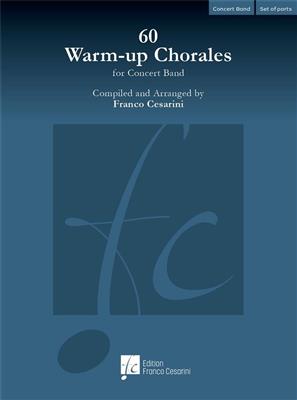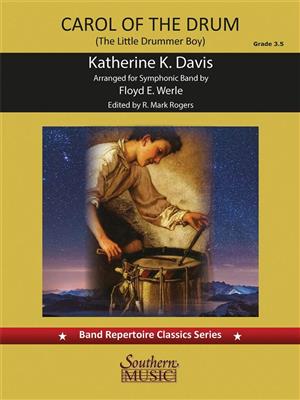Results
-
 £39.95
£39.95Three Movements from Requiem - Gabriel Fauré
Faur's Requiem in D minor Opus 48 was composed between 1887 and 1890 and comprises seven movements, three of which have been chosen to make up this arrangement for wind orchestra. The Pie Jesu, Libera Me and the In Paradisum are the 4th, 6th and 7th movements from the Requiem and in this 3-movement arrangement, the gentle and relaxing outer movements envelop the drama of the central one.
Estimated dispatch 7-14 working days
-
 £72.99
£72.99Close - Stijn Roels
Close is a chorale that sings the praises of a universal theme: love. The people who are dear to you are the ones you'd like to keep as close to you as possible, to make sure you can hug them from time to time. This was not always a matter of course during the past COVID period - an absence which many people felt deeply. The desire for the closeness of love is expressed in a beautiful, lyrical melody supported by warm harmonies. After a quiet opening, the music builds up to a grand climax, and it features tender as well as ardent moments. Perfect to dream away, as well as to dwell on the many aspects that belong to love.
Estimated dispatch 7-14 working days
-
 £64.60
£64.60Duende - Vito D'elia
Estimated dispatch 7-14 working days
-
 £119.99
£119.99Rotterdam 1945 - Johan de Meij
Rotterdam 1945 was written at the request of Maestro Arjan Tien, the chief conductor of the Marine Band of the Royal Netherlands Navy, to commemorate their 75th anniversary in 2020. 1945 also marked the end of World War II, the year that my home country Holland was liberated from Nazi Germany. My father was born in Rotterdam in 1910, so I have a special bond with this dynamic city. I have used the numbers 1-9-4-5 to create the main theme and translated it into a four-note motif: C - D'- F - G.
Estimated dispatch 7-14 working days
-
 £168.50
£168.5060 Warm-up Chorales for Concert Band
During his experience as a band conductor and teacher of wind orchestra conducting at university, Franco Cesarini has dealt with the topic of warm-ups very frequently. Throughout these long years of conducting he has had the opportunity to try many existing methods, evaluating their advantages and disadvantages.After a long time, he has decided to compile a collection of chorales for warm-ups, which are organized according to the criteria that he considers most effective.While working on his60 Warm-up Chorales for Concert Band, Franco Cesarini has always borne in mind that amateur musicians play for pleasure.He feels that it is extremely important that they have satisfaction at every moment of the rehearsal and not to start the rehearsal with needless "punishing" exercises. Nobody is really motivated to start playing with scales, long notes, or tricky rhythmical exercises. There is often a distinguished absentee in band rehearsals, namely music itself!Although this publication does not foresee a specific tempo for the chorales, they should often be performed rather slowly but without dragging.Dynamics are not indicated, so that the conductor has the opportunity to draw the attention of the musicians to his gestures and to make them react according to his indications.Timpani and bell parts have been added with the aim of not leaving the percussionists completely inactive during the warm-up phase, but can also be omitted.The chorales are written in four parts (SATB) and are also playable in smaller groups. The four voices can be played in different combinations of woodwinds or brass quartets or in mixed combinations.The collection includes ten chorales for the following keys: D flat major, A flat major, E flat major, B flat major, F major and C major.With his 60 Warm-up Chorales Franco Cesarini would like to convey the message to play the chorales in a musical way, thus raising the musicians' awareness of phrasing, the right interpretation of cadences, rubato and agogic.Above all, never do anything without putting the musical aspect in the foreground. 60 Warm-up Chorales for Concert Band: A perfect collection to warm-up and improve tuning of a concert band!
Estimated dispatch 7-14 working days
-
 £72.99
£72.99Nobles of the Mystic Shrine - John Philip Sousa
Sousa composed this march at the request of his nephew, who was sponsoring his uncle's entrance into the Ancient Arabic Order of Nobles of the Mystic Shrine in 1922. The following year, the march received its premiere in Washington D.C., under the largest band ever led by Sousa, comprised of no fewer than 6,200 Shriners. This medium-level arrangement by Charles L. Booker, Jr. makes this classic march more accessible to bands, with scoring for modern instrumental forces and transposition to an easier key.
Estimated dispatch 7-14 working days
-
£55.50
Swingin Bell Carol - Mykola D. Leontovich
Estimated dispatch 7-14 working days
-
 £73.50
£73.50El Zorro Rojo - Randall D. Standridge
Estimated dispatch 7-14 working days
-
 £174.99
£174.99The Graces of Love - Oliver Waespi
"The Graces of Love" (Le Gratie d'Amore) is the title of a book published in 1602 by Cesare Negri, the famous dance master of the Milanese court in the Renaissance. It contains numerous dance tunes and precise descriptions of courtly dances. It also includes the tune 'Il bianco fior' (The White Flower) on which the first movement of Oliver Waespi's piece is based. A vigorous dance in three-four, it leads to an acceleration and a sudden shift to an even meter towards the end. The second movement, calm and contemplative in character, features the tune 'Vaghe bellezze ...' (Veiled Beauty ...). Widely spaced melodic parts surround two solos during which the tune is varied anddeveloped. Finally, the third movement contains a Saltarello based on a tune by Vincenzo Galilei, the father of the famous astronomer, Galileo Galilei. It brings the work to a close with a hypnotic rhythm which is noble and virtuosic at the same time.
Estimated dispatch 7-14 working days
-
 £60.99
£60.99Carol of the Drum - Katherine D. Davis
This publication marks the first edition of the Floyd Werle classic arrangement for modern band, including a full score. Edited by R. Mark Rogers. (Grade 3.5)
Estimated dispatch 7-14 working days
